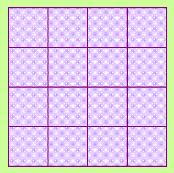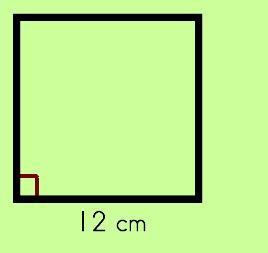We'll start with a square and use the variable s to stand for 'side.' Square begins with 's' anyway, right? So, it's easy to remember s stands for side!
Let's say each tile is 1-cm.
|
|
|
Then, one side (s) would be 4-cm, right?
|
|
|
 |
|
|
|
 |
|
|
|
Now, if you just counted the tiles, you will come up with 16 square tiles so the area of this square is 16 square cm.
Think: what is another way you could get this number?
|
|
|
|
Can you come up with a formula?
Was it, perchance, something like…
|
|
|
 |
|
|
|
|
The capital A indicates 'Area' and the little sub-script s indicates the shape 'square.'
|
|
|
|
Perfect! That's it! So, using the Substitution Property…and, then working it out…
|
|
|
|
 |
|
|
or
|
|
|
|
 |
|
|
|
|
Remember: Since the cm is also squared, the units will be 'square units.'
|
|
|
|
 |
|
|
|
You can always look for the right angle (what shape indicates a right angle?) to help you determine the sides of a square. What is the area of this square?
|
|
|



